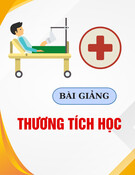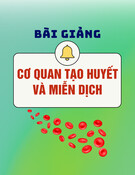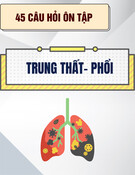
Can Tho Journal of Medicine and Pharmacy 9(5) (2023)
72
7. Ho Chi Minh city Hospital of Dermato-Venereology (2019), Guidelines for the diagnosis and
treatment of Dermatological Diseases, Medical Publisher, Ho Chi Minh.
8. Kosuke Kawai, Barbara P.Yawn (2017), “Risk Factors for Herpes Zoster: A Systematic Review
and Meta-analysis”, Mayo Clinic Proceedings, 92 (12), pp. 1806-1821.
9. National Hospital of Dermatology-Venereology & Hanoi Medical University (2019), Clinical
image, diagnosis & treatment in Dermatology, Medical Publisher, Ha Noi.
10. Peter G. E. Kennedy et al (2018), “Clinical Features of Varicella-Zoster Virus Infection”,
Viruses, 10(11), pp. 609.
11. Pragya A. Nair et al (2020), Herpes Zoster, StatPearls.
12. Nguyen Quy Thai (2011), "Evaluation of combined treatment results with laser Hene therapy
for Zona at Dermatology Department in Thai Nguyen Central General Hospital”, Journal of
Science and Technology, 81(5), pp. 147-152.
13. Vu Ngoc Vuong et al (2019), “Clinical efficacy of electroacupuncture combined with acyclovir
in the treatment of Zona”, Vietnam Medical Journal, 2(479), pp. 30-33.
(Received: 05/10/2022 – Accepted: 04/12/2022)
RESEARCH ON SOME ANTHROPOMETRIC MEASUREMENTS
AND INDEXES OF HIGH SCHOOL STUDENTS
IN CAN THO CITY FROM 2019 TO 2021
Nguyen Thi Giao Ha*, Hoang Minh Tu, Pham Viet My, Vu Tan Tho,
Dang Van Lanh, Thach Van Dung, Huynh Hien Dat, Vo Huynh Trang
Can Tho University of Medicine and Pharmacy
Email: ntgha@ctump.edu.vn
ABSTRACT
Background: Anthropometry is a part of physical anthropology, a science that allows the
study of measurement methods on the human body and the use of mathematics to analyze the
measured results in order to find patterns about human physical development. Measurement of the
human body is one of the methods of assessing the general health and nutritional status of an
individual or a population. Objectives: to confirm the anthropometric measurements and indexes
of high school students in Can Tho city from 2019 to 2021. Materials and methods: a longitudinal
section descriptive study in 400 high school students in Can Tho city from September 2019 to
September 2021. The sample size was selected according to the cluster sampling method. Results:
The growth in weight, vertical height, sitting height in our study was more than the growth over 20
years ago of students in the longitudinal study by Tham Thi Hoang Diep, the difference was
statistically significant with p<0.05. The weight of male and female both increased gradually over
the years. Compared with the report of Nguyen Phi Hung in Can Tho city in 1999 the average
weight, vertical high and sitting high also increased for each age group, the difference was also
statistically significant with p<0.01. BMI index of male and female are similar at each age, the
difference is not statistically significant with p>0.05. BMI is in the normal range according to the
WHO grading scale for ages 5-19. the physical fitness of Vietnamese students is equivalent to that
of China, higher than African countries but still lower than other countries in the Europe and
America. Compared with the research results of Nguyen Phi Hung and Le Dinh Van more than 20






























